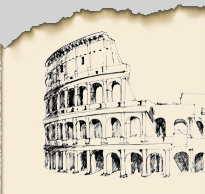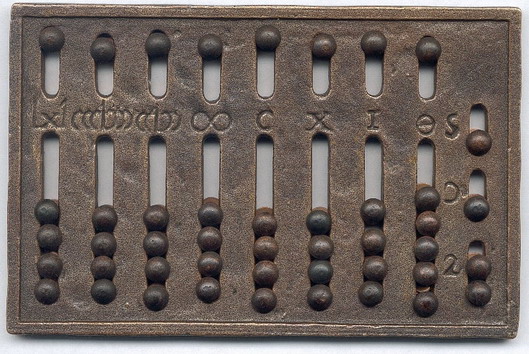


|
Initially Romans used as an abacus either a board or a table, lined into columns. But then abacus was seriously updated – it became the undivisible device where counting field and counters were physically united. Counters in Roman abacus got the name – calculus (small limestones pebbles). Later the word was transformed to calculi. Calculones – was the name for slave abacus teachers. Calculatores was the name for the noble abacus teachers. A typical Roman abacus was a bronze plate with slits. Counters are moving along them. There are seven long slits with four counters and one long slit with with five countres. There is one short slit over every long slit. Every short slit has only one counter. Also there are two short slits with one counter and one short slit with two counters. There are notations over long slits. Notations are from 1 to 1,000,000, from right to left accordingly. Every counter of top short slit is equal five conters from a lower slit. A slit with five counters is equal ounce (1/12). Two short slits are parts of an ounce. One counter from the top slit is equal six ounces (1/2).
This abacus was in fact like ancient pocket calculator. Its size was 8x12 cm! It is interesting that the Chinese abacus – swan pan and the Japanese one – soroban had the similar structure. But the analysis of swan pan and soroban evolution allows to reject thoughts that they were borrowed from Romans (if not to take seriously the witty novel “Envoy extraordinary” by Nobel prize winner William Golding). |



